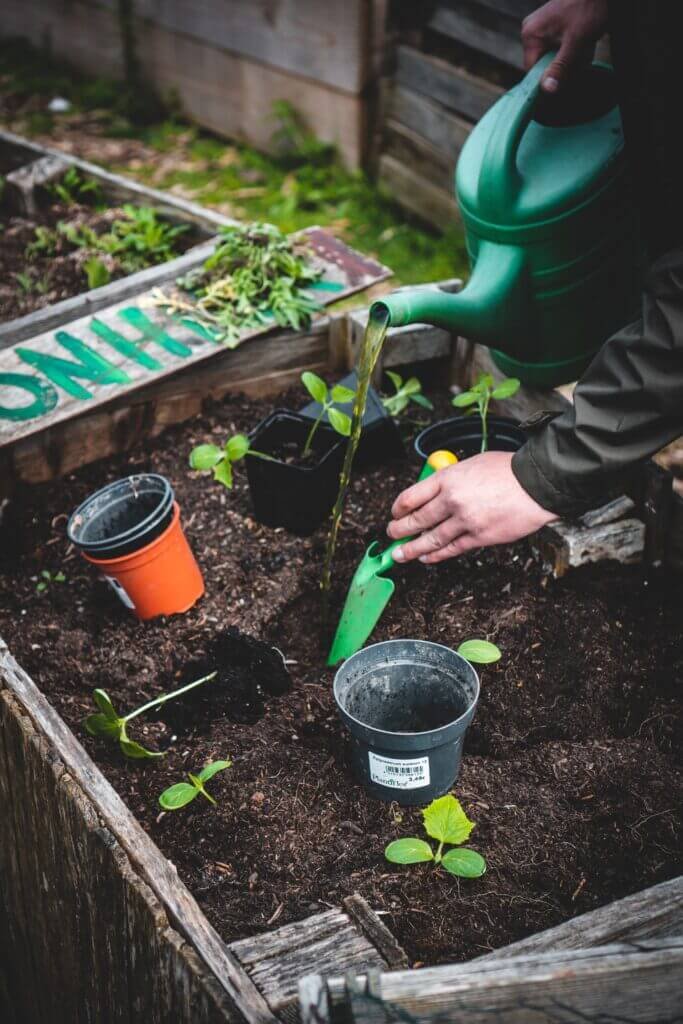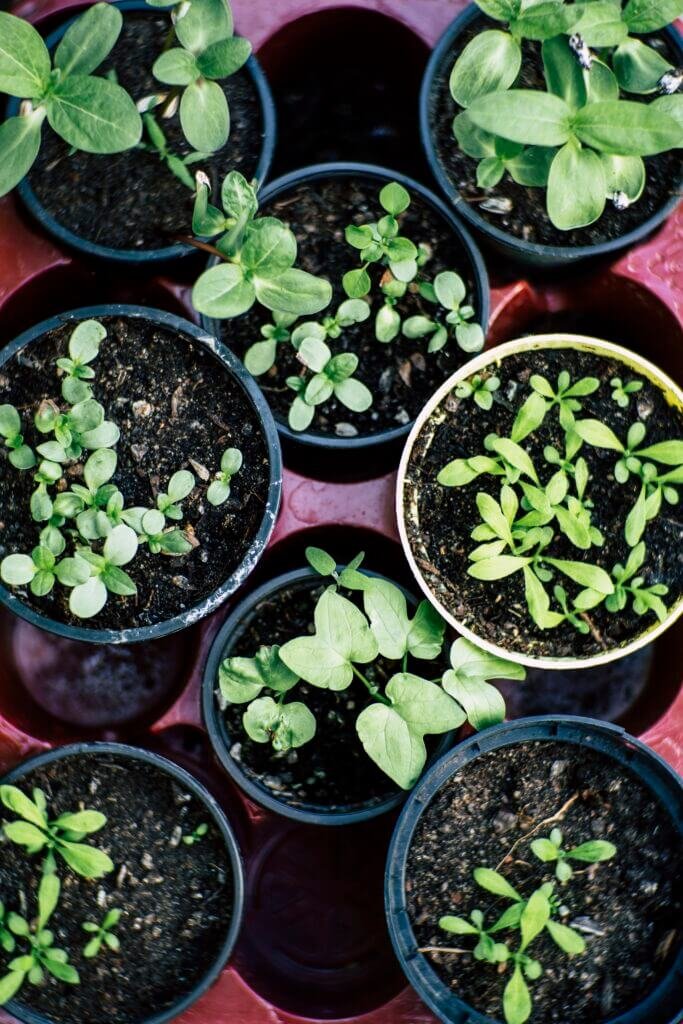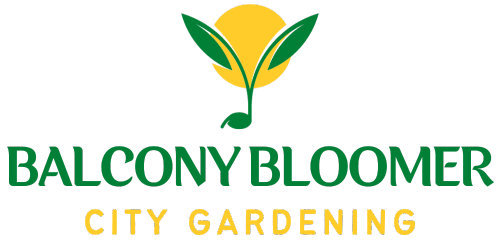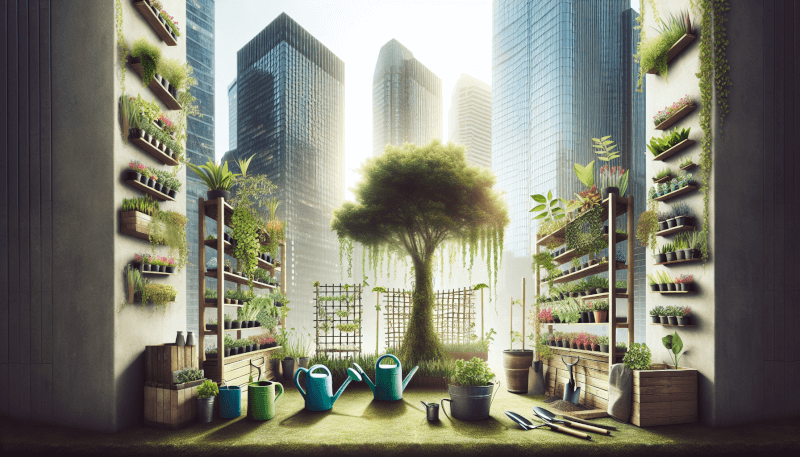Imagine transforming your small patch of urban space into a lush and thriving garden oasis. With the right planning and design, you can create a beautiful urban garden that not only adds beauty to your surroundings but also provides a peaceful retreat from the busy city life. In this article, we will explore practical tips and strategies to help you plan and design your own urban garden, making the most of your limited space and bringing nature right to your doorstep. Whether you’re a seasoned gardener or just starting out, these ideas will inspire you to create a green haven in the heart of the city.

Choosing the Right Location
Assessing Available Space
When planning an urban garden, one of the first and most important steps is to assess the available space. Look around your property or the area you have designated for your garden and consider its size and shape. Take note of any existing structures or features that may impact the garden layout, such as buildings, fences, or trees. Understanding the available space will help you determine the layout and design of your garden.
Considering Sunlight Exposure
Another crucial factor to consider when choosing the right location for your urban garden is sunlight exposure. Most plants require a certain amount of sunlight to thrive, so it’s important to assess how much sunlight your garden area receives throughout the day. Is the space in full sun, partial shade, or mostly shaded? Knowing the sunlight exposure will help you select the appropriate plants and determine the layout of your garden beds.
Analyzing Soil Quality
The quality of the soil in your chosen location is vital for successful gardening. Take the time to analyze the soil’s composition, texture, and fertility. You can do this by conducting a simple soil test or observing the plants already growing in the area. Different plants have different soil requirements, so understanding the soil quality will help you determine which plants will thrive in your urban garden. If the soil is lacking in nutrients or needs improvement, consider amending it with organic matter or other suitable soil amendments.
Determining Garden Size
Evaluating Personal Goals and Needs
Before deciding on the size of your urban garden, it’s essential to evaluate your personal goals and needs. Consider what you hope to achieve with your garden – whether it’s growing your own food, creating a relaxing oasis, or beautifying your surroundings. Your goals and needs will help you determine how much space you require and what elements to incorporate in your garden design.
Considering Space Constraints
Urban gardens often come with space constraints, so it’s important to consider the available space when determining the garden size. Take into account any limitations you may have, such as small balconies, limited ground space, or community garden plots. By factoring in these constraints, you can optimize the available space and design a garden that fits your needs within the given area.
Identifying Suitable Plant Types
The types of plants you want to grow in your urban garden will influence the size of your garden. Some plants, such as sprawling vegetables or fruit trees, require more space, while others, like herbs or flowers, can be grown in smaller areas. Consider the plants you want to include in your garden and their space requirements. This will help you determine the appropriate garden size to accommodate their growth and ensure they have enough space to flourish.

Researching Plant Compatibility
Understanding Plant Hardiness Zones
Before selecting plants for your urban garden, it’s crucial to understand the plant hardiness zones in your area. Plant hardiness zones are determined by climate conditions and indicate which plants are most likely to thrive in specific regions. By familiarizing yourself with your area’s plant hardiness zone, you can choose plants that are well-suited to your climate, ensuring they have the best chance of survival and productivity.
Examining Growth Habits
Each plant has its own growth habits, which can impact how it interacts with other plants and its overall behavior in the garden. Examining the growth habits of the plants you intend to include in your urban garden is essential for successful planning. Some plants may have aggressive spreading tendencies, while others may require trellises or supports for vertical growth. By considering these factors, you can design a garden layout that optimizes the growth habits of each plant and creates a harmonious environment.
Considering Companion Planting
Companion planting is a gardening technique that involves planting compatible crops together to mutually benefit each other. Some plants have natural affinities and work well when grown side by side, while others may inhibit each other’s growth or attract pests. By considering companion planting, you can maximize the productivity and health of your urban garden. Research which plants pair well together and strategically plan their placement in your garden.
Creating a Detailed Plan
Sketching the Garden Layout
Once you have assessed the available space, determined the garden size, and researched plant compatibility, it’s time to create a detailed plan for your urban garden. Start by sketching a garden layout that incorporates all the elements you have considered so far. This sketch will serve as a visual guide and help you determine the placement of garden beds, paths, structures, and other key features.
Dividing the Space into Zones
To create an efficient and well-organized urban garden, consider dividing the available space into zones. Each zone can serve a specific purpose, such as a vegetable garden zone, a herb garden zone, or a relaxation area. By creating these zones, you can better manage and maintain your garden, making it easier to care for and enjoy.
Allocating Areas for Key Features
In your detailed plan, allocate specific areas for key garden features, such as seating and relaxation areas, pathways, and structures for shade. By planning ahead and reserving space for these elements, you can ensure that your urban garden is not only functional but also aesthetically pleasing. These key features will enhance your garden experience and provide additional enjoyment for you and your guests.

Selecting Suitable Plants
Choosing Plants Based on Climate
When selecting plants for your urban garden, it’s important to choose varieties that are well-adapted to your local climate. Consider the average temperature range, rainfall patterns, and any seasonal variations in your area. By choosing plants that thrive in your climate, you can reduce the risk of plant stress or failure, and increase the likelihood of a successful and productive garden.
Considering Urban Garden Constraints
Urban gardens often come with unique constraints, such as limited space, pollution, or restricted sunlight. Take these factors into account when choosing plants for your garden. Opt for cultivars that are known to tolerate or thrive in urban environments. Additionally, consider using compact or dwarf varieties that require less space but still offer high yields or beautiful blooms.
Exploring Native and Drought-Tolerant Species
To create a sustainable and environmentally friendly urban garden, consider incorporating native plants and drought-tolerant species. Native plants are well-suited to the local climate and require minimal resources to thrive. Drought-tolerant species can withstand periods of water scarcity, reducing the need for excessive watering. By choosing these types of plants, you can conserve water, support local biodiversity, and create a resilient and low-maintenance garden.
Preparing the Soil
Testing Soil pH and Nutrient Levels
Before planting in your urban garden, it’s important to test the soil pH and nutrient levels. A soil test will provide valuable information about the soil’s acidity or alkalinity and its nutrient content. Based on the results, you can adjust the pH or amend the soil with necessary nutrients to create optimal conditions for plant growth. Testing the soil also helps identify any potential issues or deficiencies that may affect the health and productivity of your garden.
Amending Soil for Optimal Conditions
Once you have identified any soil deficiencies or imbalances, it’s time to amend the soil to create optimal conditions for plant growth. This may involve adding organic matter, such as compost or well-rotted manure, to improve soil structure and fertility. Other amendments, such as lime or sulfur, can be used to adjust the pH levels. By amending the soil, you can provide a nutrient-rich environment that supports healthy plant growth and maximizes yields.
Implementing Organic Practices
When preparing the soil for your urban garden, consider implementing organic practices to promote soil health and sustainability. Organic gardening involves minimizing the use of synthetic fertilizers and pesticides and instead relying on natural methods to nourish and protect plants. This can include using compost, organic fertilizers, and natural pest control methods. By adopting organic practices, you can create a more ecologically balanced garden and reduce your environmental footprint.

Providing Adequate Drainage
Assessing Drainage Needs
Proper drainage is essential to prevent waterlogging and ensure the health of your plants. Assess the drainage needs of your urban garden by observing how water drains from the area after rainfall or irrigation. If water tends to pool or sit for extended periods, it’s a sign that drainage improvements may be necessary. Understanding the drainage needs will help you determine the appropriate measures to implement for proper water management.
Installing Proper Drainage Systems
To improve drainage in your urban garden, consider installing proper drainage systems. This can involve creating trenches or channels to direct excess water away from the planting beds or installing drainage pipes. Raised beds can also improve drainage by allowing better airflow and water percolation. By implementing these drainage systems, you can prevent waterlogged soil, root rot, and other moisture-related issues that can harm your plants.
Utilizing Raised Beds and Containers
Another effective way to provide adequate drainage in an urban garden is by utilizing raised beds and containers. These elevated planting areas allow for better control over soil moisture levels as excess water can drain more easily. Raised beds also provide favorable growing conditions for plants, as they warm up more quickly in the spring and maintain better soil structure. Containers, such as pots or planters, are particularly useful in small urban spaces where ground planting is limited. They offer excellent drainage and flexibility in rearranging or relocating plants as needed.
Managing Watering and Irrigation
Designing an Efficient Irrigation System
Efficient watering and irrigation are essential for maintaining a healthy and productive urban garden. Take the time to design a suitable irrigation system that meets the specific needs of your plants. Consider using drip irrigation, which delivers water directly to the plant’s roots, minimizing water wastage through evaporation or runoff. A well-designed irrigation system will ensure that each plant receives adequate moisture while conserving water and minimizing the risk of overwatering or underwatering.
Utilizing Drip Irrigation
Drip irrigation is a highly efficient watering method that delivers water directly to the plant’s root zone. By utilizing drip irrigation in your urban garden, you can minimize water loss through evaporation and ensure that each plant receives the necessary moisture without excessive runoff. Drip irrigation systems are easy to install and can be customized to suit the specific layout and needs of your garden. This water-saving technique will help you maintain healthy plants while conserving water resources.
Monitoring Moisture Levels
Regularly monitoring moisture levels in your urban garden is crucial for plant health and water management. Use a moisture meter or simply observe the soil moisture to determine when and how much to water your plants. By being mindful of moisture levels, you can avoid overwatering or underwatering, which can lead to plant stress or diseases. Monitoring moisture levels will also help you adjust irrigation schedules or practices based on changing weather conditions or plant requirements.

Incorporating Vertical Gardening
Utilizing Vertical Space
In urban gardens where space is limited, vertical gardening offers an excellent solution to maximize growing areas. Take advantage of vertical space by utilizing walls, fences, or trellises for vertical plantings. This technique allows you to grow climbing or vining plants that take up minimal ground space but provide a lush and productive display. By incorporating vertical gardening, you can expand your planting options and create a visually appealing garden design.
Choosing Suitable Trellises and Supports
When implementing vertical gardening in your urban garden, it’s important to choose suitable trellises and supports for your climbing plants. Consider the growth habits of the plants and select trellises or supports that provide adequate stability and structure. Choose materials that are durable, weather-resistant, and aesthetically pleasing to complement your overall garden design. Properly supporting your climbing plants ensures their growth is well-guided and prevents any potential damage to structures or neighboring plants.
Selecting Climbing Plants
Selecting the right climbing plants is crucial for a successful vertical garden. Choose varieties that are well-suited for vertical growth and have the ability to cling or twine around supports. Consider the amount of sunlight and space available for vertical plantings, and opt for climbers that will thrive in these conditions. Flowering climbers can add a burst of color to your garden while edible climbers, such as beans or cucumbers, can provide a bountiful harvest. Pair compatible climbing plants together to create beautiful and functional vertical plantings.
Adding Functional and Aesthetic Elements
Including Seating and Relaxation Areas
To fully enjoy your urban garden, consider including seating and relaxation areas in your design. Create a cozy nook with a bench, table, and chairs where you can sit and unwind amidst the beauty of your garden. Incorporate comfortable cushions or outdoor furniture for added relaxation. By including these functional elements, you can create a peaceful oasis where you can not only tend to your plants but also relax and recharge.
Incorporating Pathways
Pathways are not only functional but also add aesthetic appeal to your urban garden. Incorporate well-defined pathways that guide visitors through your garden and allow easy access to different areas. Choose materials that blend with the overall design and complement the style of your garden. Whether paved with stepping stones or lined with gravel, pathways enhance the visual appeal of your garden while providing practicality and easy navigation.
Integrating Structures for Shade
Incorporating structures for shade in your urban garden is essential for creating comfortable outdoor spaces, especially during hot summer months. Consider installing pergolas, arbors, or garden umbrellas to provide shade over seating or dining areas. These structures not only offer relief from the sun but also add vertical interest and architectural beauty to your garden. Select materials and designs that harmonize with your garden’s style and complement the surrounding plants and features.
By following these steps and considerations, you can successfully plan and design your urban garden. Remember to assess the available space, evaluate your personal goals and needs, and research plant compatibility before creating a detailed plan. Select suitable plants based on climate and urban gardening constraints, and ensure proper soil preparation and drainage. Manage watering and irrigation efficiently, incorporate vertical gardening to maximize space, and add functional and aesthetic elements for a beautiful and enjoyable garden. With careful planning and a little creativity, you can create a thriving and vibrant urban garden that brings joy and tranquility to your surroundings. Happy gardening!


